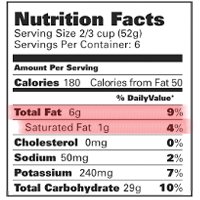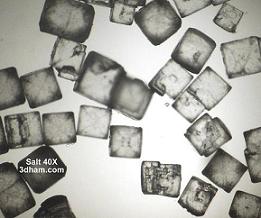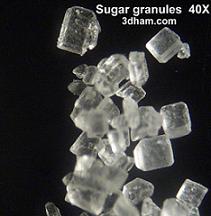|
Fats, Sugars and SaltFats
When we look at this group there are a number of them which also includes the essential fatty acids which I shall deal with in the essentials section. Our concern here is with saturates and the unsaturates , both of which can be either `mono' or poly' depending on how complex their molecular structure is. Generally speaking saturates contain more hydrogen bonds as opposed to unsaturated which contain more oleic acid bonds. The significant difference between them is that saturates are solid at room temperature as opposed to unsaturated which are liquid at room temp. The point here is that unsaturates are much healthier (in moderation of course) than saturates. Since high consumption of saturates can eventually build up inside arteries over time thus reducing blood flow.
Just imagine for a moment if you kept pouring animal lard down your home sink, as time went by it would build up inside the pipes of your plumbing system. Eventually all your drains would get blocked up. The same thing happening inside our body produces a heart attack. Trouble big time! So the main lesson is to reduce intake, and that which you do use make sure its of the unsaturated variety. Your heart will be better of for it in the long run. Another important message here is be on the lookout for those so called reduced fat or 99% fat free products. Don't be deceived by them, chances are, looking at the labels you will find (like the sample below) they are heavily carbohydrate laden. Remember by conversion the body can and does store excess sugars as fatty deposits when we have too many calories on hand.

carbohydrates There are around 200 sugars naturally occurring in nature. Also called carbohydrates due to their molecular composition which is carbon, hydrogen and water (the last two being the components of water as we know). The simplest sugar is glucose and is the fuel source for every cell in the body, (akin to what gasoline is to a car engine). Plus it is the most readily absorbed into the blood so that the cells have quick access to it. Fructose is a sugar from plants which is composed of glucose and fructose from which we get sucrose which is white table sugar, whilst lactose (a sugar found in milk) is made of glucose and galactose. The main thing to remember is that these are all simple sugars or mono saccharides and are easily and readily absorbed by the body. Plants store sugars in the form of starch which are long strands of glucose molecules called complex carbohydrates.
In conclusion all sugars are necessary, however complex are better than simple, because of the release rate in the intestinal walls is slower means that sugar levels do not spike thus resulting in excess insulin production. In addition keeping sugar levels stable means less sugar to fat conversion. One final point is that the carbohydrate content found in most food products are of the simple variety. Note: More on the nature of sugars can be found within the
Sweet code of life.
salt Salt or sodium chloride is a mineral, one of the few rocks consumed by our bodies, acting as an electrolyte to carry electrical signals through the fluids of the body and across cell membranes. It goes without saying then of the importance of this mineral. Salt is only either unrefined as in sea salt or refined which is our common table salt.
There is some conjecture as to which is best but one thing for sure is that they have differing `taste'. Its importance cannot be undermined however over consumption has been linked to `hypertension' or high blood pressure.

Previous << 1.
2.
3.
4.
>>
next
Get all the facts on fats at the American Heart Association

|





